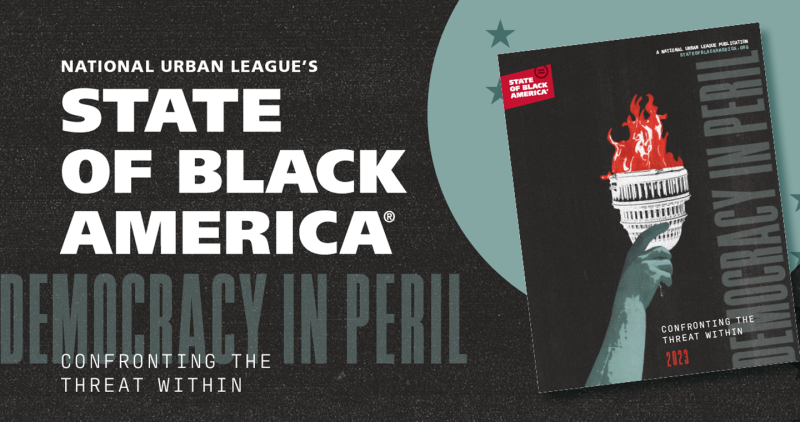Tears at the Fabric of America: The Danger of Extremism in the Ranks
Rhetoric doesn’t fight wars, but it does start them. The world has witnessed this play out in real-time during the heinous Russian invasion of Ukraine, as Nazism found its way into the narrative. This intellectually dishonest pretext was leveraged to wage an unlawful, inhumane campaign that has evolved into a massive humanitarian crisis with the specter of a nuclear catastrophe in the background.
As the foundation was being laid, American punditry leaned into its support of slick, highly produced videos of the Russian military supposedly demonstrating its hyper-masculine, homogenous might. Some commentary, even from sitting members of Congress, hovered above comparisons of that Russian propaganda to “woke and emasculating” American military advertisements. U.S. military recruitment videos, they argued, were designed to push an agenda focused on eradicating American strength and global leadership through policies more concerned with diversity, inclusion, and creating “safe spaces” than winning wars.
In contrast, critics said images of Russian soldiers – all white, young males – training in the harshest, most frigid arctic-like conditions invoked visions of an unstoppable leviathan of destruction. Juxtaposed with American marketing, these critics argued U.S. military recruitment would only discourage many strong and able-bodied recruits, particularly straight white men, from stepping foot in a recruitment station.
However, within the months that have followed, an indisputable truth has emerged: propaganda isn’t military might. It is a fiction that doesn’t make countries stronger or safer. Reality isn’t always as advertised, no matter how saturated with intimidation and grit. Slick videos don’t fight wars, let alone win them. After over a year of a conflict that President Vladimir Putin initially believed would end swiftly in victory, Russian forces are failing in Ukraine. The Russian military – a self-proclaimed paragon of strategic power ‒ could barely keep its soldiers clothed and fed or its general officers alive. Its leaders were forced to resort to conscription to keep its ranks filled. The actual might of the Russian military was quite different from its public relations scheme.
Similarly, the American military is far more complex and comprehensive than to be reduced to thoughtless bravado. It is the most agile and capable force the world has ever known. It is a military that continues to stand as the premier innovative, strategic leader in 21st-century security, and it was built on diversity. What makes our military strong is that it reflects America.
A Russian disinformation campaign didn’t produce this anti-diversity ideology. Instead, it is a homegrown culture warfare operation designed to further tear at the very fabric of society, ripping communities apart while compelling many to live in fear. Rhetoric driven by vitriol and hate across social media accounts and message boards has now transitioned into mainstream dialogue.
Military leaders, however, understand that the entanglement of threats facing Western nations today calls for agile, innovative teams to deliver the most creative, capable solutions. These answers come from groups of individuals with diverse demographics, backgrounds, lived experiences, and thoughts. Our adversaries, notably Russia, understand this, which is why their propaganda attacks the concept of diversity, a long-standing pillar of American military strength.
These types of attacks have transformed domestically into false claims of patriotism.
In actuality, the sentiments align with the white nationalist’s perspective – placing one’s race, ethnicity, and interests above all. This ideology perpetuates hate and harmful stereotypes at the expense of marginalized communities in hopes of driving discourse domestically and abroad to gain or maintain power. It is also the antithesis of unit cohesion — the bedrock of military readiness and effectiveness. They fear that the strength in the diversity of America and its military is a direct threat to their identity and, in cases such as the Euro-ethno authoritarian, their very existence.
The truth is the U.S. military has relied on service members from a broad range of cultures and backgrounds since its founding. The American Revolution saw enslaved and free Blacks serving in the Continental Army in integrated units. In fact, the sailor Crispus Attucks, the first death of the Boston Massacre in March 1770, ignited the spark that led to the fight for America’s freedom. Sacrifices such as these have continued throughout history from the former slave turned spy and combat leader Harriet Tubman to the Tuskegee Airmen of World War II and beyond.
This year, 2023, is the fiftieth anniversary of the All-Volunteer Force. Individuals who identify as racially or ethnically diverse – and Black Americans in particular – have volunteered to serve at a much higher rate than their representation within American society. Of note, in DoD’s 2021 Profile of the Military Community, African-American service members made up 16.9% of the department’s total force and 19.6% of the Army while only accounting for 12.1% of the total U.S. population. To argue that diversity is not a part of our military might be to willfully ignore these statistics and history. It also ignores the incontrovertible truth that unit cohesion matters in combat and that what makes the US military so powerful is its ability to generate such cohesion in units that reflect the diversity of our great country. Destroying American military comradery is at the heart of their extremist agenda, and attacking diversity is a part of that destruction.
From Germany to Brazil to the United States and elsewhere, we continue to witness the regular democratic order and military cohesion threatened by those who wish to harm others not aligned with their nationalist ideology. And more often than not, they wrap themselves in an ironic blanket of patriotism, arguing that a world more welcoming of historically underrepresented communities is in direct opposition to American values.
But why is it so critical that we bring greater light to this issue that has precariously lived in the shadows, and what must we do to address it? These aforementioned efforts erode the nation’s capacity to project power, remain competitive with other nations like China, and maintain the liberal order. They allow a guided path for America’s defeat. These corruptions are carried out while maintaining the belief that one race or ethnicity is supreme to all others. It is this sense of race-based nationalism that is leveraged against American society.
Any extremist activity in the U.S. military in support of, adherence to, or in coordination with this type of nationalist agenda is antithetical to democracy and our traditions. It is not simply minority communities under attack, but it is our nation and its strength. America’s diversity is its ultimate strength and geopolitical currency, and the U.S. military remains a reflection of that fact. Indeed, our diversity is an element of our military power because it enables us to harness the tremendous potential energy of our entire country for collective defense.
To erode it, to destroy the American spirit that all should be welcome and all cultures celebrate, does not simply tear the fabric but rips it to shreds. If we are to not merely survive but thrive as a nation dedicated to our constitution, we must push back against this type of rhetoric ‒ and policies constructed from it aimed at limiting who we are as individuals ‒ before we lose ourselves.


 A Climate In Crisis
A Climate In Crisis

 Executive Summary
Executive Summary